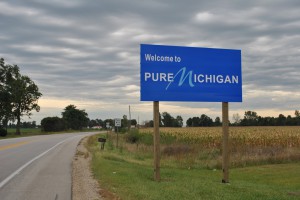Polluting the Pure Michigan brand

 The ill-advised Pure Michigan Right to Work advertisement is the latest in a string of questionable decisions that suggest the state and in particular, the Michigan Economic Development Corporation (MEDC) don’t understand the value of the brand they inherited.
The ill-advised Pure Michigan Right to Work advertisement is the latest in a string of questionable decisions that suggest the state and in particular, the Michigan Economic Development Corporation (MEDC) don’t understand the value of the brand they inherited.
The Pure Michigan brand is suffering a painful identity crisis. Why? Because there are two versions: first, there’s the Pure Michigan tourism promotional campaign, which has wisely expanded to spotlight both natural resources and great communities.
I’m a big supporter of that version because the ads remind what I love about Michigan—the places, the Great Lakes, the sense of our unique assets and place in the world.
That’s the Pure Michigan that has increased state tourism, and the one that is best positioned to keep doing it.
It sticks to the features of our state that appeal to the interests of travelers — folks looking for local food, wineries, bike trails and beaches. These assets are the calling cards of Michigan in the New Economy, an era of more mobile workers, increasing ethnic diversity, and greater emphasis on “quality of place.”
They can also be the tools of a new economic development strategy.
The other Pure Michigan is rapidly becoming a meaningless add-on to every generic business attraction or fundraising strategy the state can cook up. It has been hooked to everything from low business taxes to auto insurance to payday cash advance outlets.
Through the DNR’s Passport Perks program, “nearly every business in Michigan” can offer discounts to folks who buy their Recreation Passport license plate tab, thereby “boost[ing] your reputation as a champion of Michigan’s great outdoors.”
The reason Pure Michigan has worked so well is not simply because it’s great marketing (though it is). But because it represents a truly great product—Michigan’s places. Those iconic images of Michigan resonate because people understand that the Pure Michigan of the commercials—sunsets and sandy beaches, rejuvenating forests and cold trout stream—actually exists in real life.
Pure Michigan the Place can be truly breathtaking. If you doubt it, just check out the slideshow of the northern lights in the UP, or revisit Good Morning America’s piece on Sleeping Bear Dunes—when it was named the most beautiful place in the country.
Or for that matter, just go back and watch those original Pure Michigan commercials again.
Where is Pure Michigan’s Steve Jobs?
Steve Jobs was a militant defender of the integrity of Apple products. He refused any advertising partnerships or co-branding opportunities he felt might sully the integrity of the brand.
Where is our brand defender? These days, the Pure Michigan promotional campaign—the logo, the commercials, the billboards and sponsors—seem available to anyone and everyone. No amount of cool advertising can make a bad product better. Steve Jobs, though he loved good advertising, spent most of his time improving the product.
And that’s what counts. Just as advertising didn’t create your iPad, Pure Michigan advertising alone won’t matter without a Pure Michigan product that works.
There’s a $300 million backlog of deferred maintenance in our State Parks because we haven’t had the money to fix leaky roofs or crumbling sewer pipes.
During the last few decades, state funding support for two agencies critical to protecting and improving Pure Michigan has been decimated. General fund support for the DEQ has decreased 72% since 2001, and the DNR 66%.
They are among the smallest state department budgets receiving only 2% of all state funds and just 0.6% of general fund dollars.
Steve Jobs resisted the urge to rely solely on slick advertising to sell his computers. We should do the same with Pure Michigan, and spend some time focusing on the essence of our product as well as the power of our marketing push.
###



Comments are closed.